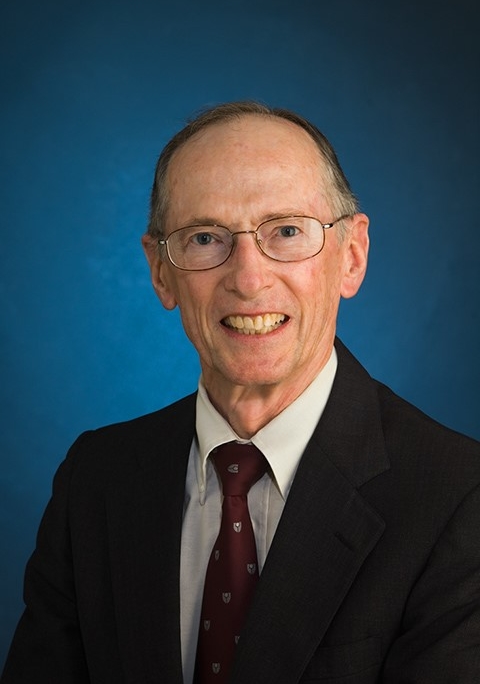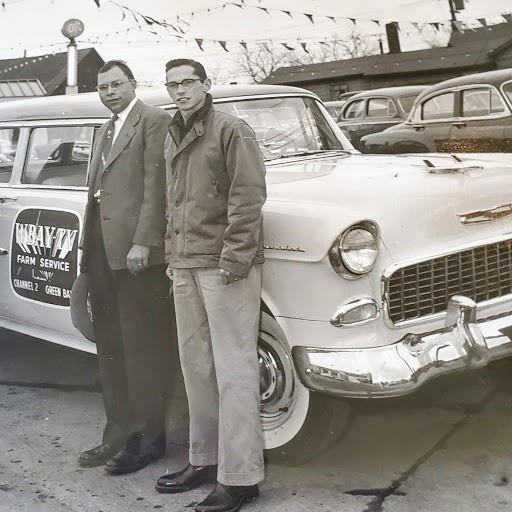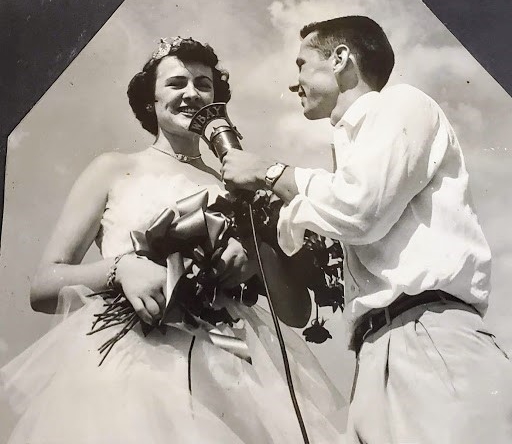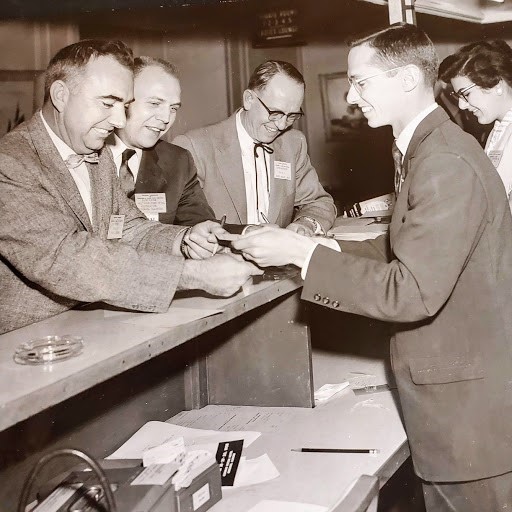(Editor’s Note: In this 75th anniversary year of NAFB, we invited Jim Evans to share his reflections on the association’s early years. An emeritus faculty member in agricultural communications at the University of Illinois, Jim Evans began his professional career in farm broadcasting. He is a Meritorious Service Award recipient and an honorary member of NAFB.)
 Five of the valued lessons I’ve learned from NAFB members
Five of the valued lessons I’ve learned from NAFB members
“When you are in Chicago, why don’t you attend the farm broadcaster conference?” R. C. “Cap” Bentley of Iowa State College asked that question in 1952 when I was a student assistant in farm programming at the college station, WOI AM/TV. He knew I had arranged to work in the press room of the International Livestock Exposition. As a member of the National Association of Radio Farm Directors (NARFD), he also knew of that annual conference in downtown Chicago. Cap’s question sparked my first personal contact with farm broadcasters throughout the nation. They met in the upper tower of the Conrad Hilton Hotel, which also was site of the National 4-H Congress. Taking his advice, I ventured into the Loop on a Sunday afternoon and began an adventure that has been integral to my career – and to this day. In this brief “memory trip,” I will highlight five of the valued lessons I have learned from NAFB members across these years.
- Care for those who follow. My own experience reflects only one example of a caring spirit among NAFB members. Cap Bentley and Craighton Knau took me under their wings when I was a student at Iowa State. Chuck Worcester and Bob Nance mentored me during a summer internship at WMT, Cedar Rapids, Iowa. At WBAY AM/TV, Green Bay, Wisconsin, Craighton gave me my first professional farm broadcasting experience. After my Air Force duty, Dix Harper mentored me when I joined him at an agricultural advertising agency in Chicago to help plan broadcast advertising for the farm equipment division of International Harvester Company. As an agricultural communications faculty member working with the national Agricultural Communicators of Tomorrow, I have seen NAFB members mentor and support a steady stream of students throughout the nation. NAFB excels in this important work.
- Get creative when storm clouds threaten. Farm broadcasting has faced storm clouds throughout my career. As a fledgling in the 1950s, I heard predictions that it would be dead in five years as farm populations declined. And I have seen farm broadcasters get creative in the face of oblivion. They found sustainable footing in commercial stations by establishing an advertising base for farm programming. When large, urban stations dropped their agricultural programming, farm broadcasters developed independent farm radio networks to serve local stations and audiences. When numbers of farmers and ranchers kept dropping, farm broadcasters added the role of programming to serve the shared interests of rural and urban listeners and viewers. When the Internet and other new media emerged, farm broadcasters integrated them into their own programming services. It’s a pattern I have respected and tried to apply in my own efforts.
- Be journalists at the core. I have seen farm broadcasters work hard across the decades to provide accurate, balanced, practical information their audiences could use and trust. Even those affiliated with interest groups generally understand and appreciate the role of independent media in a democratic society. They take seriously their foundation as journalists and information brokers. It permits them to deal respectfully and effectively with a huge and expanding array of diverse interests within agriculture and throughout society.
- Build caring relationships with audiences. As a student intern, I remember asking Chuck Worcester how to build an audience. His response: “One at a time.” He meant getting out there, interacting with those we serve, helping them in all kinds of settings and ways. I have valued this approach by farm broadcasters. Teamed with the warmth of the human voice on air, it builds remarkable connections. Trusted farm broadcasters become part of the families they reach and serve. The lesson is powerful – and not just in farm broadcasting.
- Remember – this is important work. Our students often enter career programs such as this because they see the importance of communications throughout agriculture. Somehow, during their study programs, they and their teachers can easily get distracted by emphasis on skills and techniques. I have long valued the reminders from NAFB members that we faculty members and our students are engaged (with them) in a mission that is vital to the well-being of agriculture and society.
Thanks, NAFB, for adding much to my career during a considerable chunk of these first 75 years.

with a new WBAY farm service vehicle


desk at an annual NAFB Conference
in Chicago

a noon TV farm show
